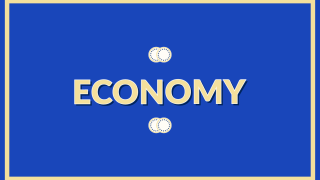Korea and Mexico were more or less the same at the beginning of the sixties. That was a great time for the Mexican economy, with growth rates above 6% annually and a per-capita GDP higher than that of Korea, a country devastated and divided after a long and bloody civil war.
Fifty years later, the tables have been turned and Korea is today a developed nation, with a thriving economy, an impressive industrial base, leading enterprises in the most diverse sectors, including high tech, and an enviable democracy. I have visited Korea on various occasions over the years and am always impressed by the speed of the change that it undergoes, but above all the clarity of course that characterizes it and the diligence with which it has addressed its crises, overcoming authoritarian governments and constructing such an impressive economic, political and social platform.
Behind the Korean success lies an Asian ethic that is radically distinct from that which we know in our environs and perhaps that explains part of its performance. However, not all of the nations of Asia have been similarly successful and Korea is exceptional because its development was the result of a deliberate and explicit process of decisions to transform itself after the war. At the heart of its success lie two crucial factors: leadership and a model educative system.
Leadership has been a distinctive characteristic across decades and has been comprised a virtue that has allowed it to adapt itself to the times. The country endured crises of the most diverse nature: the assassination of its President and his entire Cabinet with a bomb explosion, authoritarian governments, financial crises and a permanent state of tension with its North Korean neighbor. What is impressive is how each of those crises became a platform of transformation. Its emergence from the 1997 financial crisis is illustrative for us because that country not only corrected its fiscal variables, as always occurred in similar situations in Mexico, but in addition it modified the structure of the whole economy, obliging its great industrial groups to compete openly. The point is that governments come and go, but there always was a clearness of vision of what was important. They learned from the crises and took a leap forward.
In Korea, as in the rest of Asia, corruption has been a permanent fixture of economic and political life, but that has not made them loose clarity of purpose, reducing corruption to something lesser in importance. Economic progress began in Korea by imitating the Japanese, but later they adopted their own strategies. When the trade patterns were altered, they emphasized a change toward high technology; when a political crisis presented, they moved toward a democratic system. Of course these things were not linear, automatic or spotless, but a bird’s eye view reveals an unmistakable clearness of course. The result is visible in the form of highways, bridges, universities, commercial complexes and, in general, in the vitality of its cities and communities.
In terms of education, Korea constructed one of the most competitive and at the same time one of the most demanding systems worldwide. Students are required to pass brutally tough examinations to get into college and that step determines their opportunities and future in life. The conduct of Korean students –there and everywhere in the world that they find themselves- manifests itself in an absolute devotion to study. Will that permit them to transcend the current limits of science and technology to which they aspire? Time will tell. Years ago, when the Japanese seemed to be on the verge of dominating the planet, the weekly periodical The Economist conducted an analysis on the potential of the Japanese educational, scientific and technological system of outsmarting that of the U.S. Its conclusion, surprisingly, was that the intensity of their education was insufficient to surmount the creativity made possible by the liberal North American education system.
I do not know to what extent this conclusion continues to remain valid, but Korea now finds itself before that tessitura. How can the U.S. capacity of giving rise to startups, technological companies susceptible to transforming whole economies, as was the case of Microsoft, Facebook and Google be reproduced? No one else has solved this enigma, but what stands out in Korea is that it finds itself in the midst of the same debate as France, Germany and Japan. Impressive for a nation that a half century ago was a rural country with a GDP per capita one half of Mexico’s. All that inexorably takes me back to CETEG, the CNTE and other superlative manifestations of Mexico’s educative system. Worlds apart.
Current debates in Korea are divided into two. The geopolitical debates, and those relative to its economic future, although these are often the same. When all is said and done, Korea is a “sandwich” country between two powers: the U.S, with a strong military presence in the zone bordering North Korea, and China. One recurrent saying there is that “in a fight between whales, the shrimp’s back is broken.” China has become Korea’s main commercial partner and Koreans have learned to operate with their two counterparts successfully. They are now seeking an FTA with China and have joined the new Asian Infrastructure Bank, promoted by the Chinese. It continues to impress me that, in spite of the complexity of their geography, they have known how to achieve what’s important. It would behoove us to learn some of that.
@lrubiof






Comments